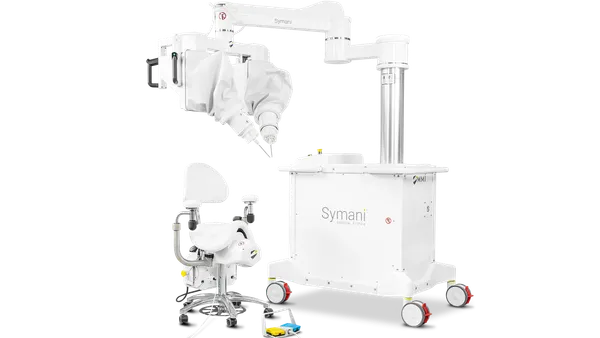Dive Brief:
-
Three-year results from a head-to-head randomized trial of transcatheter aortic valve replacement (TAVR) devices from Boston Scientific and Medtronic have shown the products perform comparably against key endpoints.
-
The results from REPRISE III, sponsored by Boston Scientific, link the devices to a similar rate of all-cause mortality or disabling stroke, confirming the key finding of the earlier two-year readout. The company is currently recruiting patients for REPRISE IV, which will assess its Lotus Edge Valve System in intermediate-risk patients.
- The three-year readout, presented this week at Transcatheter Cardiovascular Therapeutics (TCT) in San Francisco, comes months after Boston Scientific won FDA approval for its TAVR device, marking its belated entry into a growing market fought over by Edwards Lifesciences and Medtronic.
Dive Insight:
Boston Scientific fell well behind Edwards and Medtronic in the race to capture the TAVR market after a problem with the delivery system locking mechanism on its Lotus device led it to pull the product from the European market. The setback also delayed Boston Scientific's plan to file for approval in the U.S.
Having worked through the problem, Boston Scientific won FDA approval for Lotus Edge earlier this year. The challenge now for Boston Scientific is to win market share from devices that doctors have been implanting successfully for several years.
The three-year results provide Boston Scientific with some ammunition to support its attack on the TAVR market. While there was no statistical difference in the rate of all-cause mortality or disabling stroke, Lotus did appear to outperform Medtronic's CoreValve on some specific efficacy measures.
The rate of disabling stroke, independent of all-cause mortality, in the Lotus arm was 5.6%, compared to 10.5% in the CoreValve cohort. That difference was statistically significant. It also drove a statistically significant difference in the rate of cardiac mortality or disabling stroke. On other measures such as cardiovascular mortality, disabling bleeding and valve-related hospitalization, Lotus performed numerically, but not statistically, better than CoreValve.
The blackmark against Lotus is the number of patients who required new pacemakers after receiving the implant. As in the two-year readout, the proportion of patients who required pacemakers was statistically higher in the Lotus group than the CoreValve cohort. The proportion of patients in the Lotus group who required pacemakers is now up to 44%.
That could cause Boston Scientific problems as the TAVR market evolves. When the two-year results were published in JAMA, the authors wrote that "the current pacemaker rate is higher than what we consider acceptable as we move toward lower-risk patients."
In practice, the pacemaker rate may be lower than that seen in the study. That led Boston Scientific's global chief medical officer Ian Meredith to tell investors the company believes "the pacemaker rate will be competitive." With claimed benefits such as the ability to reposition the device and a low rate of paravalvular leak, Boston Scientific thinks the overall data and capability package is attractive.
It is too early to tell conclusively whether physicians agree. Boston Scientific is rolling the valve out slowly in the U.S., setting itself the target of opening 150 accounts within the first year. Earlier this month, CEO Mike Mahoney said at an investor conference the reorder rate is "very high" and the launch is on track.








